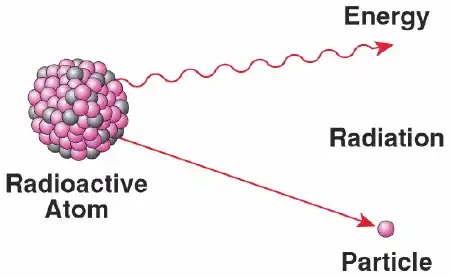افشین رشید
اُستادیار ؛ عضو هیات علمی دانشگاه آزاد اسلامی واحد علوم و تحقیقات تهران
618 یادداشت منتشر شده(Nuclear _ Electricity) Radioactive Nano Particle Decay Mode

Note: Due to radioactive nanoparticle decay mode, after a random time, large nuclei decompose into smaller and usually more stable nuclei and the starting material gradually disappears. Of course, the mass of the new nanomaterial will be only slightly less than the starting material and energy is released.
Uranium, a heavy, toxic, metallic, radioactive , and shiny silvery-white element, belongs to the actinide group, and its isotope 235 is used to fuel nuclear reactors. When refined, uranium is a silvery-white, weakly radioactive metal that is slightly softer than steel. This malleable metal is electrically conductive and slightly paramagnetic . The density of uranium is 65% greater than that of lead . If uranium is well separated, it is strongly affected by cold water and oxidizes in air. Uranium extracted from mines can be chemically converted into uranium dioxide and other industrially usable forms. The use of particles from the micro to nanoscale provides advantages for various scientific fields, but since a large percentage of their atoms are located on the surface, nanomaterials can react very much and pose potential hazards to humans. Nanoparticles are of great interest both in industry and in the natural sciences due to their wide application. While natural materials have constant physical properties regardless of size, the size of a nanoparticle determines its physical and chemical properties. Therefore, the properties of a material change as its size approaches the nanoscale and the percentage of atoms on the surface of the material becomes significant. An important feature of all nanostructures is that the number of surface atoms in them is greater than the number of bulk atoms. This ratio increases with decreasing nanoparticle size. Therefore, the size of the nanoparticle is its important feature.The range of change in the activity of nanoparticles depends on the nature and shape of the nanostructure. However , if the energy of the nanoparticle field is comparable to the energy of electromagnetic radiation and if significant changes occur in the irradiated material within a certain wavelength range due to chemical reactions, the activity of nanoparticles up to 100 nm will be significant.

The surface atoms of the nanoparticles are not compensated in terms of energy. In general, the results of the energy growth of the nanoparticles can be expressed as the total energy of the atoms on the surface of the particle. The freedom of movement of the atoms on the surface of the nanostructures is limited and only vibrational movements and electron motion are possible. These two electrokinetic reactions are interdependent because the displacement of the electron clouds of the atoms necessarily changes the vibrational frequencies of the bonds of the nanoparticles' atoms . On the other hand, the displacement of the valence electrons in the bonds changes the polarity of the bond and the bodies called the supermolecule . In this case, the electron transfer to a higher energy level becomes possible. In this respect, carbon nanotubes (CNTs) are the most interesting species under investigation. In these carbon nanotubes, which protect them from the environment, they interact and for this reason these CNTs are called metal/carbon nanotubes.
Conclusion :
In the radioactive nanoparticle decay mode, after a random time, large nuclei break down into smaller, usually more stable nuclei, and the original material gradually disappears. Of course, the mass of the new nanomaterial will be only slightly less than the original material, and energy is released.